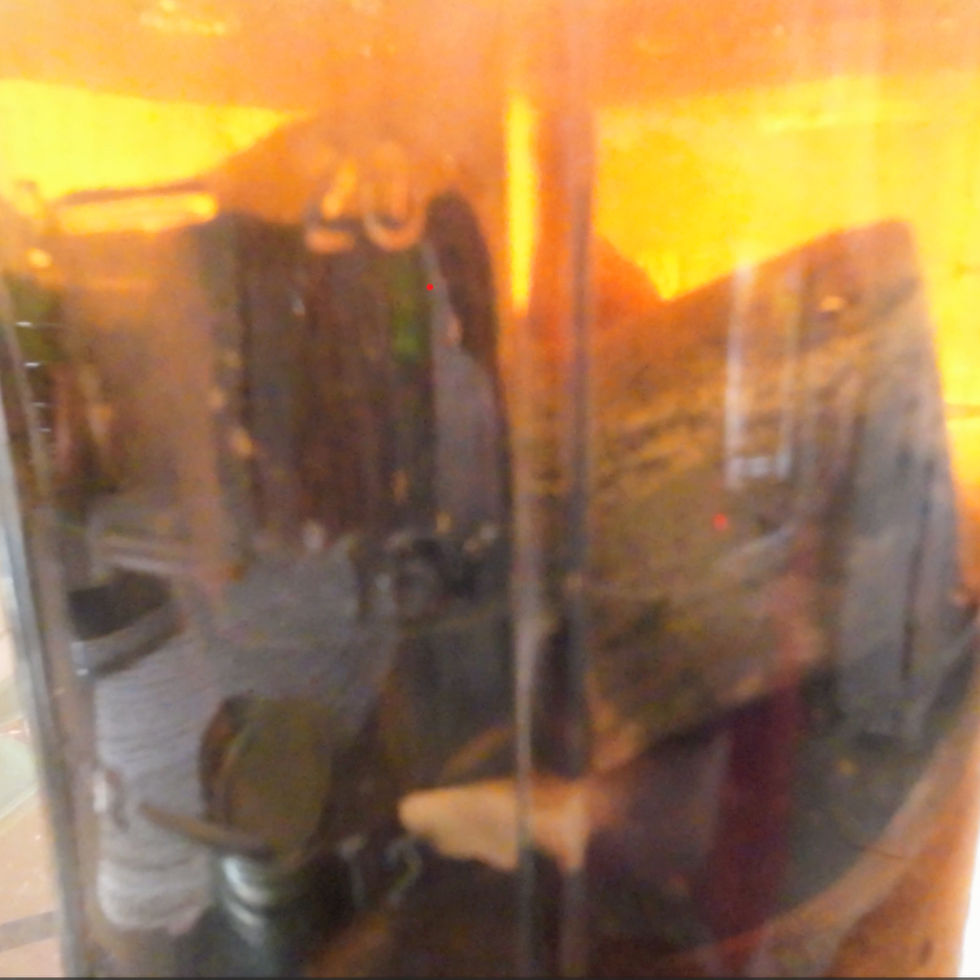INDIGENOUS MICRO-ORGANISMS (IMO) COLLECTION SITE Match Ecological Succession to Specific Crops
- Sherri Miller

- Apr 17, 2024
- 4 min read

MATCH ECOLOGICAL SUCCESSION to SPECIFIC CROPS
The second criterion for choosing an IMO collection site is to match crops to an ecosystem as close as possible to where they would be found in the wild.
Indigenous Micro-Organisms (IMO) are often regarded by their bacteria-to-fungi ratios. Because there is such a wide range of lifeforms in IMO, knowing how much fungi or bacteria is present is an incomplete understanding. This only represents a small portion of the lifeforms found in the soil.
Perhaps you like to look at your soil through a microscope. You will not see, for example, any of the viruses present, yet viruses can be critical components of soil ecology. The microscope will give you an incomplete picture of soil ecology.
We know from looking at ecological succession that the ratio of bacteria to fungi is important and does change over time as the ecosystem evolves. However, all the farmer needs to know is the patterns in Nature. Understanding Natural Patterns and matching those patterns to the crops being grown makes understanding and using the soil microbiome really simple.
ECOLOGICAL SUCCESSION
Ecological succession is the natural process by which barren land transforms into a diverse ecosystem over time. It starts with simple plants and animals, and as they grow, more complex life forms join in, creating a balanced and thriving environment. Not only do plants and animals change during this process, but so do soil microbes.
In the early stages, such as on bare rock or in disturbed soil, microbial communities are relatively simple and dominated by pioneer species that can thrive in harsh conditions. These pioneer microbes play a crucial role in breaking down organic matter, releasing nutrients, and starting the process of soil formation.
As succession progresses and more plants establish themselves, soil microbiology becomes more diverse and complex. This is because different plants release unique compounds into the soil through their roots, known as root exudates, which attract specific groups of microbes. As a result, a greater variety of bacteria, fungi, and other microorganisms is present in the soil.
As plant diversity increases, so does the diversity of microbial interactions. Some microbes form beneficial relationships with plants, such as mycorrhizal fungi that help with nutrient uptake, while others may be pathogens or decomposers. These interactions shape the soil microbiome and contribute to the ecosystem stability and resilience.
Overall, ecological succession leads to a shift in soil microbiology from simple, pioneer-dominated communities to diverse, specialized microbial networks that support the ecosystem's health and productivity.
While the changes in soil biology over the course of ecological succession can be thought of as moving from pioneer species, dominated by bacteria, to climax species, dominated by fungi, the vast majority of plants live in ecosystems somewhere in between. Most plants do not live a freshly barren landslides, nor do they live deep in old-growth forests. Most food crops live in the middle, with a diverse and balanced soil biology.
CHOOSE THE RIGHT ECOSYSTEM
To choose which location to collect IMO from, consider where in the ecosystem's timeline your crops would thrive. Most thrive somewhere in between the extremes.
Almost none will be found on freshly barren land, such as after a landslide or on a lava flow. Those are really harsh conditions, and very few plants can survive there.
Nor will most food crops be found in an old-growth forest. These deep forests have strong fungal species that can live without much sunlight or airflow, and thrive on breaking down large masses of fallen wood. Many of the fungal species found in climax landscapes include fungal diseases like powdery mildew and phytophthora.
If you are growing plants that live in harsh conditions, such as growing cacti in the desert, follow the pattern and look for spots in these extreme environments. These are the microbes that will work hard for plants in harsh conditions. Find robust cacti or shrubs with a good amount of leaf fall.
A soil culture taken from an area with a pattern of early succession, such as grasslands, may benefit high-nutrient-demand plants. These areas still contain many pioneer microbes that play a crucial role in breaking down organic matter and releasing nutrients.
Cultures collected from grassland sites will not lack fungal components. They can still build networks of mycorrhizal fungi over time, and they will tend to be less susceptible to fungal disease organisms found in later succession ecosystems with more hardwood biomass.
The pattern for good collection sites for high-nutrient-demand plants would be grasslands, meadows, prairies, or savannahs. Tender annuals such as lettuce and tomatoes would do well using collections with this pattern.
Many plants are firmly in the middle of ecological succession and need a more balanced soil biology. These include bushes, shrubs, and berries, which are typically found on the edges of forests, just inside or just outside. For these types of plants, look for collection sites under shrubs and bushes, at the edge of bamboo stands and forests.
For tree crops and plants that live in the forest, look to collect from forest areas, although even for tree crops it may be best to avoid collecting deep in an old-growth forest. Very few fruit and nut trees, for example, thrive in the dark woods. Again, think about the appropriate ecosystem for your crop.
Follow the patterns of where plant crops would be found if they were wild. Pattern recognition in the landscape is a better tool for choosing collection sites than microscopes. It is not necessary to go deep into the dark woods to find a good spot to collect, or a spot free from pesticides and herbicides. For many crops, the forest is an inappropriate ecosystem. Most great places can be found much closer to home.




Comments